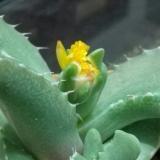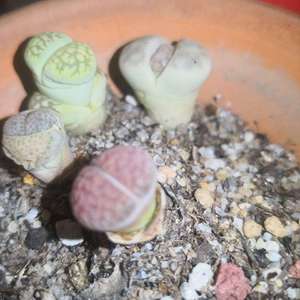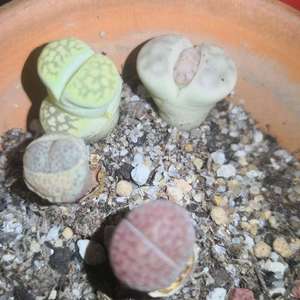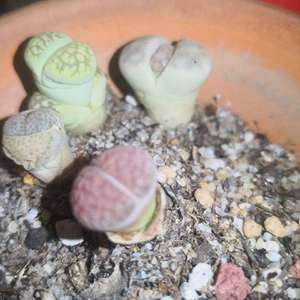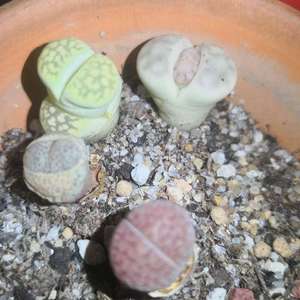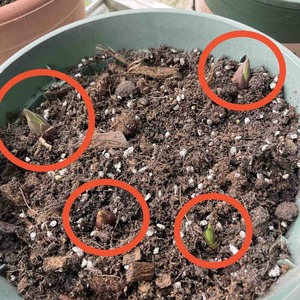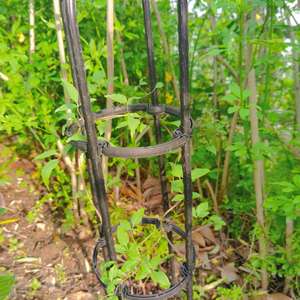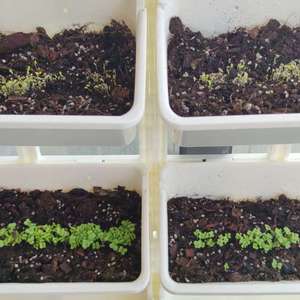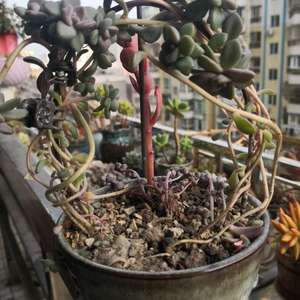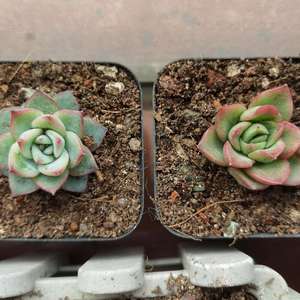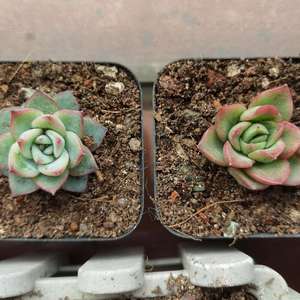文章
Miss Chen
2022年06月03日

The Cornelian cherry dogwood (Cornus mas) is a large multi-stemed deciduous shrub that is sometimes trained as a small tree. The growth habit is usually round or oval in shape. The green foliage is 2 to 4 inches long, presenting in an opposite leaf arrangement. As with other dogwoods, there is also opposite branching.
A winner of the Award of Garden Merit from the Royal Horticultural Society, this shrub features clusters of yellow flowers appearing at the end of winter or early spring, which then lead to edible red fruits. This is one of the earliest shrubs to bloom, with blossoms that unfurl before the leaves. The clusters of yellow flowers are similar in appearance to forsythia, and the red stone fruits (drupes) that ripen in July resemble olives in size and shape. They are used in European cuisine for drinks, syrups, preserves, jams, and sauces. They can be eaten fresh or dried, though they need to be fully ripe in order to lose some of their bitterness.
The leaves of cornelian cherry dogwood may develop some shades of reddish-purple in fall, though the display is not notable. The peeling, exfoliating brown bark adds some four-season interest to the plant. Cornelian cherry dogwood is a fairly slow-growing species that will take up to 10 years to achieve 15 feet in height. It is normally planted in the spring.
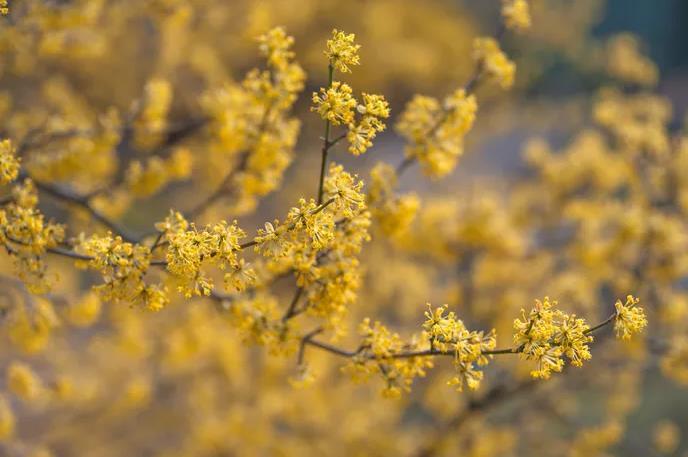
Botanical Name Cornus mas
Common Names Cornelian cherry dogwood, cornelian cherry, European cornel
Plant Type Deciduous shrub/ tree
Mature Size 15 to 25 feet tall; 15- to 20-foot spread
Sun Exposure Full sun to part shade
Soil Type Medium moisture, well-drained soil
Soil pH 5.0 to 8.0 (acidic to slightly alkaline)
Bloom Time March
Flower Color Yellow
Hardiness Zones 4 to 8 (USDA)
Native Area Southwestern Asia, Southern Europe
How to Grow Cornelian Cherry Dogwood
This shrub will grow suitably in almost any well-drained soil in a location that gets at least 4 hours of sunlight daily. Once established, it has a good tolerance for drought or occasional flooding, but will not survive constant soaking in dense soils.
The fruit, while tasty, has a large pit that makes it somewhat laborious to harvest and use in cooking. If you do grow this plant for the fruit, it's best to plant at least two shrubs. Cornelian cherry dogwood is somewhat self-fertile, but the results will be better if there are at least two shrubs to cross-pollinate.
The cornelian cherry dogwood can spread by suckers, so keep the plant in check by removing them promptly.
Light
This shrub prefers a location that offers full sun to part shade. It requires a bit more sun than most dogwoods—less than 4 hours of sun daily will lead to reduced flowering and fruit production.
Soil
Cornelian cherry dogwood is most happy with a well-drained rich soil that has a good amount of humus in it. It will fail to thrive in dense soils that remain constantly wet. While most dogwoods prefer slightly acidic soil, cornelian cherry dogwood can do fine even in slightly alkaline conditions.
Water
This plant has average water needs—it will thrive with about 1 inch of water per week in the form of rainfall and/or irrigation. Make sure the moisture penetrates the soil to a depth of about 6 inches. Once established, this type of dogwood is fairly resilient, bouncing back from being flooded during wet spells or parched during drought.
Temperature and Humidity
Rated for USDA zones 4 to 8, cornelian cherry dogwood will survive temperatures down to minus-25 or minus-30 degrees Fahrenheit.
Fertilizer
Like most dogwoods, cornelian cherry dogwood is best fertilized once in the early spring, then once about three months later. Use a balanced slow-release granular fertilizer mixed into the soil around the roots. If you have extremely alkaline soil, using an acidifying fertilizer may help.
Pruning Cornelian Cherry Dogwood
This shrub tends to form multiple leader stems, and to control the size you'll need to prune away suckers that appear. To train the plant as a small tree, select a main leader as a trunk, then systematically prune away competing shoots. This species also can be readily pruned to maintain as a hedge plant.
The best timing for hard pruning is immediately after the flowers have faded in spring, but be aware that you'll lose the fruits for that season.
Propagating Cornelian Cherry Dogwood
As with most dogwoods, cornelian cherry dogwood is most often propagated by taking stem cuttings and rooting them.
Snip 3- to 5-inch cuttings from the tips of green stems, then remove the bottom set of leaves. Cut the other leaves in half, but leave them on the cuttings. Dip the cut ends in a rooting compound, then plant the cuttings in small containers filled with a commercial seed-starter mix or a mixture of perlite and sand.
Place the planted cutting inside a large plastic bag, and place the pot in a bright, warm location. Check the cutting weekly to see if roots have developed (you will feel resistance when tugging on the cutting). When a good network of roots has developed (about 6 weeks), remove the plastic bag, and continue growing the new plant in a sunny window. Keep the potting mix moist. At the point where the cutting outgrows its first pot, you can repot it in a container filled with ordinary potting mix. When it outgrows this second pot, it is ready to plant in the landscape. This process may involve growing the rooted cutting indoors over the winter, then transplanting it outdoors the following spring.
Common Pests/ Diseases
When properly grown in the right conditions, this shrub has few disease or pest issues. While it is not immune to the dogwood anthracnose disease that plagues many types of dogwood, this species is decidedly more resistant to that disease.
The easy-care reputation is lost, though, if a cornelian cherry dogwood becomes unhealthy. Stressed plants can be susceptible to borers; and leaf miner, gall midge, and scale may also become more than just cosmetic problems.
Potential disease problems include leaf spot, crown canker, root rot, powdery mildew, and leaf blight. Here, too, it is stressed trees or those planted in less than ideal circumstances that are most vulnerable.
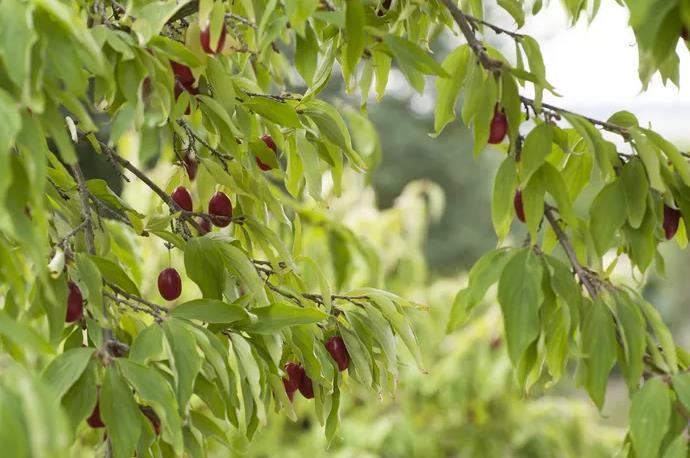
Varieties of Cornelian Cherry Dogwood
For a shrub with variegated leaves, choose the 'Variegata' or `Elegantissima' cultivars.
If you prefer golden leaves, look for 'Aurea'.
Try 'Nana' if you want a plant that only reaches about 3 feet tall.
For yellow fruit rather than red, plant 'Xanthocarpa' or 'Flava'
'Fructu Violaceo' produces purple fruits.
'Alba' has white fruits.
If you live in the Southern United States, 'Spring Glow' is an excellent choice to handle the conditions found there.
‘Golden Glory’ has extra-large flowers and large fruit, with a more upright branching growth habit.
Landscape Uses
Cornelian cherry dogwood is highly prized for its very early spring blooms. It works well as a hedge, screen, or foundation plant, or can be grouped with other shrubs species in a mixed border. It can also be trained as a small specimen tree. Juxtaposed against a dark green woodland background, the yellow blossoms pop with color.
This form of dogwood is a good choice if you want to lure birds, squirrels, and other animals to your garden, as they love the fruit.
A winner of the Award of Garden Merit from the Royal Horticultural Society, this shrub features clusters of yellow flowers appearing at the end of winter or early spring, which then lead to edible red fruits. This is one of the earliest shrubs to bloom, with blossoms that unfurl before the leaves. The clusters of yellow flowers are similar in appearance to forsythia, and the red stone fruits (drupes) that ripen in July resemble olives in size and shape. They are used in European cuisine for drinks, syrups, preserves, jams, and sauces. They can be eaten fresh or dried, though they need to be fully ripe in order to lose some of their bitterness.
The leaves of cornelian cherry dogwood may develop some shades of reddish-purple in fall, though the display is not notable. The peeling, exfoliating brown bark adds some four-season interest to the plant. Cornelian cherry dogwood is a fairly slow-growing species that will take up to 10 years to achieve 15 feet in height. It is normally planted in the spring.

Botanical Name Cornus mas
Common Names Cornelian cherry dogwood, cornelian cherry, European cornel
Plant Type Deciduous shrub/ tree
Mature Size 15 to 25 feet tall; 15- to 20-foot spread
Sun Exposure Full sun to part shade
Soil Type Medium moisture, well-drained soil
Soil pH 5.0 to 8.0 (acidic to slightly alkaline)
Bloom Time March
Flower Color Yellow
Hardiness Zones 4 to 8 (USDA)
Native Area Southwestern Asia, Southern Europe
How to Grow Cornelian Cherry Dogwood
This shrub will grow suitably in almost any well-drained soil in a location that gets at least 4 hours of sunlight daily. Once established, it has a good tolerance for drought or occasional flooding, but will not survive constant soaking in dense soils.
The fruit, while tasty, has a large pit that makes it somewhat laborious to harvest and use in cooking. If you do grow this plant for the fruit, it's best to plant at least two shrubs. Cornelian cherry dogwood is somewhat self-fertile, but the results will be better if there are at least two shrubs to cross-pollinate.
The cornelian cherry dogwood can spread by suckers, so keep the plant in check by removing them promptly.
Light
This shrub prefers a location that offers full sun to part shade. It requires a bit more sun than most dogwoods—less than 4 hours of sun daily will lead to reduced flowering and fruit production.
Soil
Cornelian cherry dogwood is most happy with a well-drained rich soil that has a good amount of humus in it. It will fail to thrive in dense soils that remain constantly wet. While most dogwoods prefer slightly acidic soil, cornelian cherry dogwood can do fine even in slightly alkaline conditions.
Water
This plant has average water needs—it will thrive with about 1 inch of water per week in the form of rainfall and/or irrigation. Make sure the moisture penetrates the soil to a depth of about 6 inches. Once established, this type of dogwood is fairly resilient, bouncing back from being flooded during wet spells or parched during drought.
Temperature and Humidity
Rated for USDA zones 4 to 8, cornelian cherry dogwood will survive temperatures down to minus-25 or minus-30 degrees Fahrenheit.
Fertilizer
Like most dogwoods, cornelian cherry dogwood is best fertilized once in the early spring, then once about three months later. Use a balanced slow-release granular fertilizer mixed into the soil around the roots. If you have extremely alkaline soil, using an acidifying fertilizer may help.
Pruning Cornelian Cherry Dogwood
This shrub tends to form multiple leader stems, and to control the size you'll need to prune away suckers that appear. To train the plant as a small tree, select a main leader as a trunk, then systematically prune away competing shoots. This species also can be readily pruned to maintain as a hedge plant.
The best timing for hard pruning is immediately after the flowers have faded in spring, but be aware that you'll lose the fruits for that season.
Propagating Cornelian Cherry Dogwood
As with most dogwoods, cornelian cherry dogwood is most often propagated by taking stem cuttings and rooting them.
Snip 3- to 5-inch cuttings from the tips of green stems, then remove the bottom set of leaves. Cut the other leaves in half, but leave them on the cuttings. Dip the cut ends in a rooting compound, then plant the cuttings in small containers filled with a commercial seed-starter mix or a mixture of perlite and sand.
Place the planted cutting inside a large plastic bag, and place the pot in a bright, warm location. Check the cutting weekly to see if roots have developed (you will feel resistance when tugging on the cutting). When a good network of roots has developed (about 6 weeks), remove the plastic bag, and continue growing the new plant in a sunny window. Keep the potting mix moist. At the point where the cutting outgrows its first pot, you can repot it in a container filled with ordinary potting mix. When it outgrows this second pot, it is ready to plant in the landscape. This process may involve growing the rooted cutting indoors over the winter, then transplanting it outdoors the following spring.
Common Pests/ Diseases
When properly grown in the right conditions, this shrub has few disease or pest issues. While it is not immune to the dogwood anthracnose disease that plagues many types of dogwood, this species is decidedly more resistant to that disease.
The easy-care reputation is lost, though, if a cornelian cherry dogwood becomes unhealthy. Stressed plants can be susceptible to borers; and leaf miner, gall midge, and scale may also become more than just cosmetic problems.
Potential disease problems include leaf spot, crown canker, root rot, powdery mildew, and leaf blight. Here, too, it is stressed trees or those planted in less than ideal circumstances that are most vulnerable.

Varieties of Cornelian Cherry Dogwood
For a shrub with variegated leaves, choose the 'Variegata' or `Elegantissima' cultivars.
If you prefer golden leaves, look for 'Aurea'.
Try 'Nana' if you want a plant that only reaches about 3 feet tall.
For yellow fruit rather than red, plant 'Xanthocarpa' or 'Flava'
'Fructu Violaceo' produces purple fruits.
'Alba' has white fruits.
If you live in the Southern United States, 'Spring Glow' is an excellent choice to handle the conditions found there.
‘Golden Glory’ has extra-large flowers and large fruit, with a more upright branching growth habit.
Landscape Uses
Cornelian cherry dogwood is highly prized for its very early spring blooms. It works well as a hedge, screen, or foundation plant, or can be grouped with other shrubs species in a mixed border. It can also be trained as a small specimen tree. Juxtaposed against a dark green woodland background, the yellow blossoms pop with color.
This form of dogwood is a good choice if you want to lure birds, squirrels, and other animals to your garden, as they love the fruit.
0
0
成长记
绿萝
2022年04月20日

今天狠心打了顶,问了老板,在图4位置打顶,好怕不长了,留多了一些图2,剩下的舍不得丢,插在太阳花的盆子里面了图3,不知道能不能长,不打顶是不是也可?(>人<;)


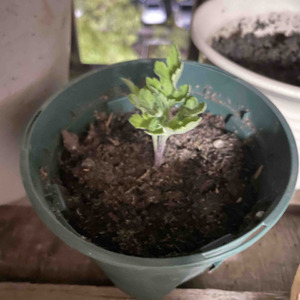
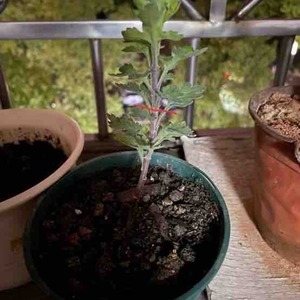




0
0
文章
Miss Chen
2022年02月13日

Huernia zebrina, commonly referred to as owl eye succulents, are a species of succulents native to South Africa that are known for their distinctive other-worldly blooms. They are characterized by 4-sided stems with soft teeth along the edges, and yellow and red 5-pointed, star-shaped flowers. Owl eye succulents are not large succulents, growing to only six to eight inches tall. They grow well indoors as houseplants since they generally require warm temperatures in order to thrive. Plus, if you frequently forget to water your houseplants - this is the succulent for you! They thrive on minimal moisture and can survive for several weeks at a time without water if needed.
Botanical Name Huernia zebrina
Common Name Owl eyes succulent, little owl eyes, lifesaver cactus, lifesaver plant, carrion flower, zebra-striped Huernia
Plant Type Succulent
Mature Size 6" spread, 6-8" in height
Sun Exposure Bright light - partial shade
Soil Type Well-draining
Soil pH 6
Bloom Time Summer
Flower Color Yellow, red, purple, white
Native Area South Africa
How to Grow Owl Eyes (Huernia zebrina) Succulents
Not only are owl eyes succulents eye-catching, but they are easy to grow too. They can be characterized as having low water needs, and don’t require as much light as other succulents do. Generally, they don’t require pruning either, unless you are hoping to shape the plant or reduce its size. If you do prune an owl eyes succulent make sure to keep the cuttings - these can be used for propagation later on!
For those looking to grow this plant indoors, it is important to know that some varieties can exude a pungent smell similar to that of carrion to attract flies and encourage pollination. However, not all varieties have this characteristic.

Light
Unlike most succulents, Huernia zebrina does not tolerate hot, direct sun. Plants that receive too much light will turn red or purple, rather than deep green. In their natural habitat owl eyes, succulents grow beneath shrubs or other plants so they prefer bright light to partial shade conditions.
Water
Owl eyes succulents are sensitive to overwatering and can easily develop root rot. As a result, the roots should be allowed to dry out completely between waterings. In the active growing season (spring and summer) owl eyes succulents will need more water than in the dormant season (fall and winter).
Soil
In their natural habitat, owl eyes succulents grow in open dry shrubland and stony areas. The soil is often calcrete or loamy Consequently, owl eyes succulents require a potting mix with excellent drainage to help mimic their natural environment. A mixture of 50 percent pumice or perlite, 25 percent peat or organic mulch, and 25% sand is perfect for Huernia zebrina and will help to prevent root rot.
Temperature and Humidity
Owl eyes succulents need warm temperatures. They do best between 50 to 80 degrees Fahrenheit (10 to 27 degrees Celsius) and should be protected from cold or freezing temperatures. Place owl eyes succulents outdoors during the summer for best growth, but ensure to bring them back indoors before the temperatures drop below 50 degrees Fahrenheit (10 degrees Celsius).
Fertilizer
As with most succulents, owl eyes succulents don’t require frequent fertilization. However, they can benefit from monthly fertilization throughout the growing season. Use a balanced liquid plant food or succulent fertilizer, such as a 15-15-15, once per month diluted to half strength. Stop fertilizing before the end of the summer to ensure that new growth is not developing as the plant goes into dormancy.
Potting and Repotting
The roots of owl eyes succulents experience dieback in their cool-seasoned dormant, so they do best in shallow containers that allow the soil to dry out completely. Bonsai planters, for example, are great for Heurnia zebrina. Otherwise, using unglazed clay or terracotta pots for owl eyes succulents is recommended as they will help to keep the soil dry.
Propagating Owl Eyes (Huernia zebrina) Succulents
Owl eyes succulents can be propagated by cuttings easily. Take cuttings of the stems and set them aside for 24 hours to allow the ends to callous over. Plant the calloused end of the cutting in a well-draining potting mix and place the pot in a location that receives bright, indirect light. Do not water the new plant until small roots begin to form, approximately two and three weeks.
Common Pests/Diseases
Owl eyes succulents are susceptible to common houseplant pests such as spider mites, thrips, and aphids. Unfortunately, Huernia zebrina is especially attractive to mealy bugs. Treat infested succulents by rubbing the plant with 70 percent isopropyl alcohol to remove the bugs.
Botanical Name Huernia zebrina
Common Name Owl eyes succulent, little owl eyes, lifesaver cactus, lifesaver plant, carrion flower, zebra-striped Huernia
Plant Type Succulent
Mature Size 6" spread, 6-8" in height
Sun Exposure Bright light - partial shade
Soil Type Well-draining
Soil pH 6
Bloom Time Summer
Flower Color Yellow, red, purple, white
Native Area South Africa
How to Grow Owl Eyes (Huernia zebrina) Succulents
Not only are owl eyes succulents eye-catching, but they are easy to grow too. They can be characterized as having low water needs, and don’t require as much light as other succulents do. Generally, they don’t require pruning either, unless you are hoping to shape the plant or reduce its size. If you do prune an owl eyes succulent make sure to keep the cuttings - these can be used for propagation later on!
For those looking to grow this plant indoors, it is important to know that some varieties can exude a pungent smell similar to that of carrion to attract flies and encourage pollination. However, not all varieties have this characteristic.

Light
Unlike most succulents, Huernia zebrina does not tolerate hot, direct sun. Plants that receive too much light will turn red or purple, rather than deep green. In their natural habitat owl eyes, succulents grow beneath shrubs or other plants so they prefer bright light to partial shade conditions.
Water
Owl eyes succulents are sensitive to overwatering and can easily develop root rot. As a result, the roots should be allowed to dry out completely between waterings. In the active growing season (spring and summer) owl eyes succulents will need more water than in the dormant season (fall and winter).
Soil
In their natural habitat, owl eyes succulents grow in open dry shrubland and stony areas. The soil is often calcrete or loamy Consequently, owl eyes succulents require a potting mix with excellent drainage to help mimic their natural environment. A mixture of 50 percent pumice or perlite, 25 percent peat or organic mulch, and 25% sand is perfect for Huernia zebrina and will help to prevent root rot.
Temperature and Humidity
Owl eyes succulents need warm temperatures. They do best between 50 to 80 degrees Fahrenheit (10 to 27 degrees Celsius) and should be protected from cold or freezing temperatures. Place owl eyes succulents outdoors during the summer for best growth, but ensure to bring them back indoors before the temperatures drop below 50 degrees Fahrenheit (10 degrees Celsius).
Fertilizer
As with most succulents, owl eyes succulents don’t require frequent fertilization. However, they can benefit from monthly fertilization throughout the growing season. Use a balanced liquid plant food or succulent fertilizer, such as a 15-15-15, once per month diluted to half strength. Stop fertilizing before the end of the summer to ensure that new growth is not developing as the plant goes into dormancy.
Potting and Repotting
The roots of owl eyes succulents experience dieback in their cool-seasoned dormant, so they do best in shallow containers that allow the soil to dry out completely. Bonsai planters, for example, are great for Heurnia zebrina. Otherwise, using unglazed clay or terracotta pots for owl eyes succulents is recommended as they will help to keep the soil dry.
Propagating Owl Eyes (Huernia zebrina) Succulents
Owl eyes succulents can be propagated by cuttings easily. Take cuttings of the stems and set them aside for 24 hours to allow the ends to callous over. Plant the calloused end of the cutting in a well-draining potting mix and place the pot in a location that receives bright, indirect light. Do not water the new plant until small roots begin to form, approximately two and three weeks.
Common Pests/Diseases
Owl eyes succulents are susceptible to common houseplant pests such as spider mites, thrips, and aphids. Unfortunately, Huernia zebrina is especially attractive to mealy bugs. Treat infested succulents by rubbing the plant with 70 percent isopropyl alcohol to remove the bugs.
0
0
文章
Miss Chen
2021年10月05日

Becky shasta daisies (Leucanthemum x superbum 'Becky') are a cultivar of the hybrid shasta daisies. They grow larger than several of the other shasta cultivars, sporting many long-lasting, showy flowers that stretch roughly 3 to 4 inches across. The blooms have a classic daisy look with white petals around a central bright yellow disk. Becky shasta daisies rise up on rigid stems that bear leathery, lance-shaped green leaves. These flowers have a fast growth rate and can be aggressive spreaders in the garden if you let them freely sow their seeds. They can be planted in the spring or early fall.
Botanical Name Leucanthemum x superbum 'Becky'
Common Name Becky shasta daisy
Plant Type Herbaceous, perennial
Mature Size 3–4 ft. tall, 2–3 ft. wide
Sun Exposure Full
Soil Type Well-drained
Soil pH Neutral
Bloom Time Summer
Flower Color White with a yellow center
Hardiness Zones 5–9 (USDA)
Native Area Hybrid developed in North America
Toxicity Toxic to people and animals

Becky Shasta Daisy Care
When provided with the proper growing conditions, Becky shasta daisies don’t require much care. Even though these flowers grow fairly tall, they typically don’t require staking due to their rigid stems. They’re commonly used as borders, in mixed flower beds, and in cutting gardens (as they make a wonderfully long-lasting cut flower).
When the daisies are in bloom, deadheading (removing spent blooms) can help to promote additional flowering. Plus, removing the flower heads before they go to seed will prevent unwanted spread of the plants. Furthermore, every two to three years, plan to divide your plants to maintain their vigor. Simply dig up a clump and break it apart at its roots, keeping as many as possible intact. Then, replant the smaller clumps wherever you wish.
Light
Plant Becky shasta daisies in full sun, meaning at least six hours of direct sunlight on most days. This will result in the best flowering on the plants. However, in climates with especially hot summers, some light shade in the afternoon can be beneficial for the daisies. But if they are starting to look leggy, that can mean they aren't getting enough sun.
Soil
These flowers aren’t picky about their soil type as long as it has good drainage. Soil that remains wet for too long can cause root rot and ultimately be fatal to the plants.
Water
Becky shasta daisies have low to moderate water requirements, and they have fairly good drought tolerance. During their first growing season, water your daisies regularly to keep the soil lightly moist (but ensure that it doesn’t get soggy). After that, you typically will only need to water during prolonged periods of drought when your plants have noticeable signs of wilt.
Temperature and Humidity
These plants have fairly good heat and cold tolerance within their growing zones. But extremely high temperatures can stress the plants and hinder their blooming. Likewise, a late frost or freeze in the spring can injure the buds and prevent some blooming. A layer of mulch around the daisies can help to protect the roots from extreme temperature fluctuations. Humidity typically isn't an issue for Becky shasta daisies as long as they have good soil drainage.
Fertilizer
Becky shasta daisies typically don't need fertilizer unless you have very lean soil. But it can be beneficial to work some compost into the soil around your plants annually in the spring.

Shasta Daisy Varieties
There are multiple cultivars of shasta daisies besides 'Becky' including:
‘Esther Read’: This variety has pure white double flowers (having extra petals) with yellow centers.
‘Silberprinzesschen’: A compact plant, it only grows up to a foot tall but features profuse blooms that stretch about 3 inches across.
‘Snow Lady’: This is another compact variety that only reaches around a foot high and features the classic white daisy flowers, which stretch roughly 2.5 inches across.
‘Wirral Pride’: Double flowers adorn this variety which reaches around 1.5 to 2 feet tall.
Common Pests/Diseases
These daisies occasionally come down with a fungal disease called verticillium wilt, in which the plants quickly wilt and sometimes turn yellow first. It’s recommended to remove and destroy plants with this disease. They also are susceptible to leaf spot, a fungal disease that causes spots and damage to the foliage. This can be treated with a fungicide. Some common garden pests that might visit Becky shasta daisies include aphids and leaf miners, which can be treated with neem oil.
Botanical Name Leucanthemum x superbum 'Becky'
Common Name Becky shasta daisy
Plant Type Herbaceous, perennial
Mature Size 3–4 ft. tall, 2–3 ft. wide
Sun Exposure Full
Soil Type Well-drained
Soil pH Neutral
Bloom Time Summer
Flower Color White with a yellow center
Hardiness Zones 5–9 (USDA)
Native Area Hybrid developed in North America
Toxicity Toxic to people and animals

Becky Shasta Daisy Care
When provided with the proper growing conditions, Becky shasta daisies don’t require much care. Even though these flowers grow fairly tall, they typically don’t require staking due to their rigid stems. They’re commonly used as borders, in mixed flower beds, and in cutting gardens (as they make a wonderfully long-lasting cut flower).
When the daisies are in bloom, deadheading (removing spent blooms) can help to promote additional flowering. Plus, removing the flower heads before they go to seed will prevent unwanted spread of the plants. Furthermore, every two to three years, plan to divide your plants to maintain their vigor. Simply dig up a clump and break it apart at its roots, keeping as many as possible intact. Then, replant the smaller clumps wherever you wish.
Light
Plant Becky shasta daisies in full sun, meaning at least six hours of direct sunlight on most days. This will result in the best flowering on the plants. However, in climates with especially hot summers, some light shade in the afternoon can be beneficial for the daisies. But if they are starting to look leggy, that can mean they aren't getting enough sun.
Soil
These flowers aren’t picky about their soil type as long as it has good drainage. Soil that remains wet for too long can cause root rot and ultimately be fatal to the plants.
Water
Becky shasta daisies have low to moderate water requirements, and they have fairly good drought tolerance. During their first growing season, water your daisies regularly to keep the soil lightly moist (but ensure that it doesn’t get soggy). After that, you typically will only need to water during prolonged periods of drought when your plants have noticeable signs of wilt.
Temperature and Humidity
These plants have fairly good heat and cold tolerance within their growing zones. But extremely high temperatures can stress the plants and hinder their blooming. Likewise, a late frost or freeze in the spring can injure the buds and prevent some blooming. A layer of mulch around the daisies can help to protect the roots from extreme temperature fluctuations. Humidity typically isn't an issue for Becky shasta daisies as long as they have good soil drainage.
Fertilizer
Becky shasta daisies typically don't need fertilizer unless you have very lean soil. But it can be beneficial to work some compost into the soil around your plants annually in the spring.

Shasta Daisy Varieties
There are multiple cultivars of shasta daisies besides 'Becky' including:
‘Esther Read’: This variety has pure white double flowers (having extra petals) with yellow centers.
‘Silberprinzesschen’: A compact plant, it only grows up to a foot tall but features profuse blooms that stretch about 3 inches across.
‘Snow Lady’: This is another compact variety that only reaches around a foot high and features the classic white daisy flowers, which stretch roughly 2.5 inches across.
‘Wirral Pride’: Double flowers adorn this variety which reaches around 1.5 to 2 feet tall.
Common Pests/Diseases
These daisies occasionally come down with a fungal disease called verticillium wilt, in which the plants quickly wilt and sometimes turn yellow first. It’s recommended to remove and destroy plants with this disease. They also are susceptible to leaf spot, a fungal disease that causes spots and damage to the foliage. This can be treated with a fungicide. Some common garden pests that might visit Becky shasta daisies include aphids and leaf miners, which can be treated with neem oil.
0
0
文章
Miss Chen
2021年09月08日

Growing avocados outdoors as productive fruit trees can be tricky, but growing them as houseplants is fun and easy, resulting in a seedling that will eventually turn into an attractive little specimen with glossy, oval leaves 4 to 8 inches long. True, it's unlikely your tree will ever bear fruit (unless you give it about 10 years), and even if it does, the fruit from the offspring most likely won't resemble the original. But as an indoor plant, an avocado has plenty of merit as a decorative novelty. Keep in mind that all parts of the avocado plant are toxic to animals.1
Common Name Avocado
Botanical Name Persea americana
Family Lauraceae
Plant Type Broadleaf evergreen fruit tree
Mature Size 30 to 60 ft. in the landscape; potted plants can be pruned to remain small
Sun Exposure Full sun
Soil Type General-purpose potting soil
Soil pH 6.0 to 6.5, tolerates acidic or alkaline soil
Bloom Time Seasonal bloomer
Flower Color Greenish-yellow
Hardiness Zones 10-12 (USDA), any zone as a houseplant
Native Area Mexico
Toxicity Toxic to dogs, birds, and horses
Avocado Plant Care
When avocado is grown as a houseplant, it is often grown from seed (the fruit pits) that can be sprouted in water or directly in potting soil.
Established plants will do best in sunny windows. Fertilize them regularly in spring and summer with a balanced granular fertilizer.
Avocados grown indoors are mostly novelty plants. If you want it to bear fruit and turn into the tree it really is, you'll have to move your avocado outside, but this may only work if you live in a warmer climate.
Light
Like banana trees, avocado plants thrive in full sun. They will tolerate some shade, but potted indoor plants generally need the brightest spot you can find. If you're starting from a seed, the seed can be kept on a bright windowsill until roots form, and the first leaves emerge.
Water
Avocado plants should be kept continuously moist, but adequate drainage is essential. Watch for leaf yellowing, which is a sign of too much water.
Temperature
Avocado plants prefer warm growing seasons, but can take winter temperatures down to 50 degrees Fahrenheit, when growth will slow.
Soil
A rich, fast-draining potting soil mix is ideal.
Fertilizer
Fertilize abundantly during the growing season with a balanced fertilizer.
Types of Avocado Plants
Although there are about 1,000 varieties of avocado, the one most likely to find its way into your home is the Haas avocado, which is grown in tremendous quantities in California and throughout Latin America. These are small, pebbly avocados with high-fat content and delicious flesh. Larger, lighter green Florida avocados are also found in season. These have less fat and are sometimes marketed as health-conscious avocados. You'll find plenty of healthy pits inside any of these types of avocados that you can use to grow your plants.
Pruning
The first serious trimming should occur when the plant is only 12 inches tall. At that time, cut it back to 6 inches and allow for new leaves and stems to form.
As it gets taller, pinch off new growth throughout the summer to force new branches to form, because avocado fruit develops on new growth. Keeping the new growth pinched off will also keep the plant bushy while controlling its size.
Propagating Avocado Plants
Avocado can be propagated in a number of ways., but is usually done for avocado trees planted in the landscape. Professionals graft desirable avocado varieties onto disease-resistant root-stock to produce a disease-resistant tree with the desired kind of fruit or preferred size.
They can also be propagated by air-layering: Encouraging roots to grow by scarring a tree branch, wrapping the wounded area with a small amount of rooting medium, and allowing a bundle of roots to develop while the branch is still on the tree. Once a network of roots are developed, the branch is snipped off and planted in soil.
How to Grow Avocado Plants From Seed
For houseplants, propagate an avocado plant with the seed of the fruit. The seed of an avocado is the large brown pit. Here's how to grow your avocado houseplant:
To sprout an avocado seed, insert three toothpicks into the seed and suspend it with the broad end down over a glass of water.
Cover about an inch of the seed with water.
Keep it in a warm place, but not in direct sunlight.
The seed should sprout in two to six weeks. Let the young plant grow to six inches, then cut it back to three inches to encourage stronger root growth.
When the roots have grown thick and the stem has new leaves again, plant in soil in a pot about 10 inches in diameter, leaving half the seed still exposed above the soil. Make sure the pot has a drainage hole.
Potting and Repotting Avocado Plants
Repot your avocado every spring when the plant begins to grow again. For the first few years, trimming your avocado is necessary to encourage a bushy plant. You can place the avocado outside during summer, and bring it inside before first frost.
Overwintering
Bring your plants inside if it's going to be below 50 degrees Fahrenheit. Winter's lack of humidity may cause your plant to lose leaves, but they will come back when the weather is warm.
Common Pests & Plant Diseases
Look for symptoms like leaf yellowing, which can indicate too much water or sluggish drainage. They may develop root rot in overly wet potting soil. Also, keep an eye out for a white crust on the soil, this means an excess of salt build-up from the fertilizer. Flush the pot regularly.2
When grown outdoors, avocado trees are threatened by laurel wilt, caused by the Raffaelea lauricola fungus. It is transmitted by several different species of ambrosia beetle. Infected trees usually succumb within 4 to 8 weeks.
Common Name Avocado
Botanical Name Persea americana
Family Lauraceae
Plant Type Broadleaf evergreen fruit tree
Mature Size 30 to 60 ft. in the landscape; potted plants can be pruned to remain small
Sun Exposure Full sun
Soil Type General-purpose potting soil
Soil pH 6.0 to 6.5, tolerates acidic or alkaline soil
Bloom Time Seasonal bloomer
Flower Color Greenish-yellow
Hardiness Zones 10-12 (USDA), any zone as a houseplant
Native Area Mexico
Toxicity Toxic to dogs, birds, and horses
Avocado Plant Care
When avocado is grown as a houseplant, it is often grown from seed (the fruit pits) that can be sprouted in water or directly in potting soil.
Established plants will do best in sunny windows. Fertilize them regularly in spring and summer with a balanced granular fertilizer.
Avocados grown indoors are mostly novelty plants. If you want it to bear fruit and turn into the tree it really is, you'll have to move your avocado outside, but this may only work if you live in a warmer climate.
Light
Like banana trees, avocado plants thrive in full sun. They will tolerate some shade, but potted indoor plants generally need the brightest spot you can find. If you're starting from a seed, the seed can be kept on a bright windowsill until roots form, and the first leaves emerge.
Water
Avocado plants should be kept continuously moist, but adequate drainage is essential. Watch for leaf yellowing, which is a sign of too much water.
Temperature
Avocado plants prefer warm growing seasons, but can take winter temperatures down to 50 degrees Fahrenheit, when growth will slow.
Soil
A rich, fast-draining potting soil mix is ideal.
Fertilizer
Fertilize abundantly during the growing season with a balanced fertilizer.
Types of Avocado Plants
Although there are about 1,000 varieties of avocado, the one most likely to find its way into your home is the Haas avocado, which is grown in tremendous quantities in California and throughout Latin America. These are small, pebbly avocados with high-fat content and delicious flesh. Larger, lighter green Florida avocados are also found in season. These have less fat and are sometimes marketed as health-conscious avocados. You'll find plenty of healthy pits inside any of these types of avocados that you can use to grow your plants.
Pruning
The first serious trimming should occur when the plant is only 12 inches tall. At that time, cut it back to 6 inches and allow for new leaves and stems to form.
As it gets taller, pinch off new growth throughout the summer to force new branches to form, because avocado fruit develops on new growth. Keeping the new growth pinched off will also keep the plant bushy while controlling its size.
Propagating Avocado Plants
Avocado can be propagated in a number of ways., but is usually done for avocado trees planted in the landscape. Professionals graft desirable avocado varieties onto disease-resistant root-stock to produce a disease-resistant tree with the desired kind of fruit or preferred size.
They can also be propagated by air-layering: Encouraging roots to grow by scarring a tree branch, wrapping the wounded area with a small amount of rooting medium, and allowing a bundle of roots to develop while the branch is still on the tree. Once a network of roots are developed, the branch is snipped off and planted in soil.
How to Grow Avocado Plants From Seed
For houseplants, propagate an avocado plant with the seed of the fruit. The seed of an avocado is the large brown pit. Here's how to grow your avocado houseplant:
To sprout an avocado seed, insert three toothpicks into the seed and suspend it with the broad end down over a glass of water.
Cover about an inch of the seed with water.
Keep it in a warm place, but not in direct sunlight.
The seed should sprout in two to six weeks. Let the young plant grow to six inches, then cut it back to three inches to encourage stronger root growth.
When the roots have grown thick and the stem has new leaves again, plant in soil in a pot about 10 inches in diameter, leaving half the seed still exposed above the soil. Make sure the pot has a drainage hole.
Potting and Repotting Avocado Plants
Repot your avocado every spring when the plant begins to grow again. For the first few years, trimming your avocado is necessary to encourage a bushy plant. You can place the avocado outside during summer, and bring it inside before first frost.
Overwintering
Bring your plants inside if it's going to be below 50 degrees Fahrenheit. Winter's lack of humidity may cause your plant to lose leaves, but they will come back when the weather is warm.
Common Pests & Plant Diseases
Look for symptoms like leaf yellowing, which can indicate too much water or sluggish drainage. They may develop root rot in overly wet potting soil. Also, keep an eye out for a white crust on the soil, this means an excess of salt build-up from the fertilizer. Flush the pot regularly.2
When grown outdoors, avocado trees are threatened by laurel wilt, caused by the Raffaelea lauricola fungus. It is transmitted by several different species of ambrosia beetle. Infected trees usually succumb within 4 to 8 weeks.
0
0
文章
Miss Chen
2021年08月18日

Arrowwood viburnum (Viburnum dentatum) is a fairly small flowering shrub that is part of the honeysuckle family. It grows in an upright, rounded shape with stems of glossy green, oval foliage with toothed edges. The leaves are around 4 inches long. In the late spring, the shrub bears showy white flowers that stretch roughly 2 to 4 inches across. Blue-black fruits appear after the flowers and tend to attract birds and other wildlife. In the fall, the shrub’s foliage turns to shades of yellow, orange, and red. Arrowwood viburnum has a moderate growth rate. It can be planted in the spring or early fall.
Botanical Name Viburnum dentatum
Common Names Arrowwood viburnum, southern arrowwood, American arrowwood, roughish arrowwood
Plant Type Shrub
Mature Size 6–10 ft. tall and wide
Sun Exposure Full, partial
Soil Type Loamy, moist, well-drained
Soil pH Acidic
Bloom Time Spring
Flower Color White
Hardiness Zones 2–8 (USDA)
Native Area North America
Arrowwood Viburnum Care
Arrowwood viburnum shrubs are good for border plantings, as well as for use as hedges and screens. In ideal growing conditions and with excellent care the shrubs can reach 15 feet tall, but normally they are a bit smaller than that. They also are a good choice for planting in areas of your yard that are too wet for many other plants, as they can handle wet soil.
In terms of their care, plan to water whenever the soil begins to dry out. Fertilization will generally be an annual task, along with pruning. The shrubs can spread out of their bounds via suckers traveling through the soil. So cut back these suckers if you wish to prevent the shrub’s spread. Moreover, if you live in a climate that has considerable temperature fluctuations, a light layer of mulch around your shrub can help to keep its roots at a consistent temperature as well as to retain soil moisture.
Light
This shrub grows well in full sunlight to partial shade, meaning it needs at least roughly four hours of direct sunlight on most days. In hot climates, shade from the strong afternoon sun is ideal. But too little sun can impede flowering.
Soil
Arrowwood viburnum prefers a loamy, well-drained soil. But it can tolerate a range of soil types, including clay soil. It likes an acidic soil pH.
Water
The shrub needs at least a moderate amount of soil moisture, though mature plants have some drought tolerance. They also can handle occasional flooding. Keep young shrubs well watered, and continue to give established plants water whenever the soil begins to dry out.
Temperature and Humidity
The shrubs prefer temperate conditions, though they have fairly good heat and cold tolerance within their growing zones. Make sure to water them well in very hot weather to minimize plant stress, and give them protection if your temperatures will be unseasonably cold to prevent foliage damage. Humidity typically isn’t an issue for the shrubs.
Fertilizer
To encourage healthy growth and profuse flowering, apply a balanced, slow-release fertilizer in the spring. It also can be beneficial to mix compost into the soil around your shrub.
Common Pests/Diseases
Arrowwood viburnum shrubs don’t have serious issues with pests or diseases. However, they might be bothered by the viburnum leaf beetle (Pyrrhalta viburni). This beetle has become a major problem for viburnum shrubs in Europe and North America. Both the adult beetles and their larvae eat the leaves of the bushes. And if not controlled, the pest can defoliate your shrubs completely, resulting in their death. The female beetles lay their eggs on the undersides of the shrub stems. So if you notice dark spots there, it’s best to prune off those stems and dispose of them before the eggs hatch in the spring. Use organic pesticides only for serious infestations, as they also can kill beneficial insects.
Pruning
These shrubs don’t need extensive pruning. Right after the plant is done flowering, prune any stems necessary to maintain the shrub’s shape. But avoid taking off more than a third of the shrub's overall size. Remove any dead, damaged, or diseased portions of the shrub whenever you spot them.
Viburnum Varieties
There are several species and varieties of viburnum shrubs, including:
Burkwood viburnum: Burkwood viburnum grows to around 8 to 10 feet tall with a slightly smaller spread. Its glossy leaves and fragrant flowers are its main selling points.
Doublefile viburnum: Doublefile viburnum is a beetle-resistant bush and has showier flowers than arrowwood viburnum.
Korean spice viburnum: Not only is Korean spice viburnum beetle-resistant, but it is also very fragrant.
Mapleleaf viburnum: Mapleleaf viburnum sports unusual pinkish fall foliage and reaches around 4 to 6 feet tall and wide.
Snowball bush viburnum: This shrub's common name says it all. Gardeners grow snowball bush for the rounded shape of its white flower heads.
Botanical Name Viburnum dentatum
Common Names Arrowwood viburnum, southern arrowwood, American arrowwood, roughish arrowwood
Plant Type Shrub
Mature Size 6–10 ft. tall and wide
Sun Exposure Full, partial
Soil Type Loamy, moist, well-drained
Soil pH Acidic
Bloom Time Spring
Flower Color White
Hardiness Zones 2–8 (USDA)
Native Area North America
Arrowwood Viburnum Care
Arrowwood viburnum shrubs are good for border plantings, as well as for use as hedges and screens. In ideal growing conditions and with excellent care the shrubs can reach 15 feet tall, but normally they are a bit smaller than that. They also are a good choice for planting in areas of your yard that are too wet for many other plants, as they can handle wet soil.
In terms of their care, plan to water whenever the soil begins to dry out. Fertilization will generally be an annual task, along with pruning. The shrubs can spread out of their bounds via suckers traveling through the soil. So cut back these suckers if you wish to prevent the shrub’s spread. Moreover, if you live in a climate that has considerable temperature fluctuations, a light layer of mulch around your shrub can help to keep its roots at a consistent temperature as well as to retain soil moisture.
Light
This shrub grows well in full sunlight to partial shade, meaning it needs at least roughly four hours of direct sunlight on most days. In hot climates, shade from the strong afternoon sun is ideal. But too little sun can impede flowering.
Soil
Arrowwood viburnum prefers a loamy, well-drained soil. But it can tolerate a range of soil types, including clay soil. It likes an acidic soil pH.
Water
The shrub needs at least a moderate amount of soil moisture, though mature plants have some drought tolerance. They also can handle occasional flooding. Keep young shrubs well watered, and continue to give established plants water whenever the soil begins to dry out.
Temperature and Humidity
The shrubs prefer temperate conditions, though they have fairly good heat and cold tolerance within their growing zones. Make sure to water them well in very hot weather to minimize plant stress, and give them protection if your temperatures will be unseasonably cold to prevent foliage damage. Humidity typically isn’t an issue for the shrubs.
Fertilizer
To encourage healthy growth and profuse flowering, apply a balanced, slow-release fertilizer in the spring. It also can be beneficial to mix compost into the soil around your shrub.
Common Pests/Diseases
Arrowwood viburnum shrubs don’t have serious issues with pests or diseases. However, they might be bothered by the viburnum leaf beetle (Pyrrhalta viburni). This beetle has become a major problem for viburnum shrubs in Europe and North America. Both the adult beetles and their larvae eat the leaves of the bushes. And if not controlled, the pest can defoliate your shrubs completely, resulting in their death. The female beetles lay their eggs on the undersides of the shrub stems. So if you notice dark spots there, it’s best to prune off those stems and dispose of them before the eggs hatch in the spring. Use organic pesticides only for serious infestations, as they also can kill beneficial insects.
Pruning
These shrubs don’t need extensive pruning. Right after the plant is done flowering, prune any stems necessary to maintain the shrub’s shape. But avoid taking off more than a third of the shrub's overall size. Remove any dead, damaged, or diseased portions of the shrub whenever you spot them.
Viburnum Varieties
There are several species and varieties of viburnum shrubs, including:
Burkwood viburnum: Burkwood viburnum grows to around 8 to 10 feet tall with a slightly smaller spread. Its glossy leaves and fragrant flowers are its main selling points.
Doublefile viburnum: Doublefile viburnum is a beetle-resistant bush and has showier flowers than arrowwood viburnum.
Korean spice viburnum: Not only is Korean spice viburnum beetle-resistant, but it is also very fragrant.
Mapleleaf viburnum: Mapleleaf viburnum sports unusual pinkish fall foliage and reaches around 4 to 6 feet tall and wide.
Snowball bush viburnum: This shrub's common name says it all. Gardeners grow snowball bush for the rounded shape of its white flower heads.
0
0


